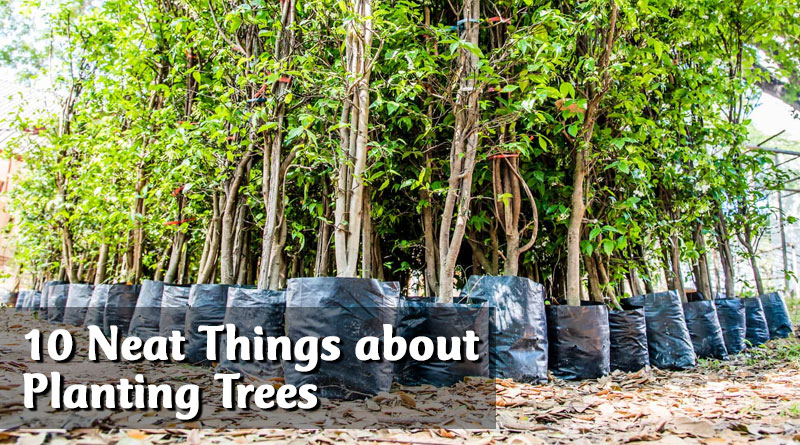1. The roots don’t reach to China.
Many tree planting failures can be traced to digging the planting hole too deep. The hole should only be as deep as the root ball, but it should be twice as wide. You can loosen the soil beyond the perimeter of the root ball to allow for penetration by the roots as they grow. The tree should be planted on a little pedestal. Dig a bit of a trench (a couple of inches deep) at the outer circumference of the planting hole to allow excess water to drain away.
2. The backfill story.
When planting trees, the backfill should be the soil that was used to dig the hole in the first place, not compost. If the soil is very heavy, you can amend it with about 25 per cent compost or peat, but no more, as the light soil will make the tree unstable. The roots may also not develop the toughness they need to penetrate the native soil and so may begin winding around the looser soil of the planting hole, eventually strangling the tree.
3. Aacch! You’re choking me.
Backfill only to where the trunk begins to slightly flare out, no higher. Most tree feeder roots live in the top eight to 12 inches of soil. If you pile soil higher over the roots, one or two things can happen: the tree forces its roots to the surface, up through your top soil or amendment in search of air and water, or the tree chokes and dies because it cannot breath.
4. Potted or bagged.
If potted, the tree should be removed from the pot just before planting it in the hole. Check to ensure that the roots are not beginning to wind around the base of the pot and if they are, flare them out and arrange them down the sides of the planting mound. If the tree is bagged, place the whole root ball, bag and all, in the hole, then cut away the burlap (if the soil feels really loose, leave the burlap in place, making a few slits along the sides). The burlap will eventually rot away. Use the same method for fibre pots, but soak them in water for an hour or so before planting and slit the bottom of the pot as well.
5. The next step.
Don’t step down hard on the newly backfilled soil. You can tamp it down lightly, then add three buckets of water. Wait an hour. The soil will settle, removing air pockets. Add more backfill to the prescribed level. Wait another hour, then add three more buckets of water. You can also use a trickle hose left on for 15 to 20 minutes.
6. Water, water, water, mulch, mulch, mulch.
For the first two to three years of planting your tree, be sure it is well watered. Water every two weeks for the first year, being sure that there is no standing water and that the soil is not drenched. Add two inches of mulch (no more – you don’t want to suffocate the roots) at the base of the tree, being sure to leave about four inches around the root flare with no mulch. “Think donut, not volcano,” advises one planter. The mulch is there to preserve mixture and discourage weeds. If too close to the trunk, it can cause rotting.
7. To feed or not to feed.
When backfilling you can add a little mycorrhiza to the soil, but lay off the commercial fertilizers for a while. You want the tree to “find its roots” and establish before asking it to push top growth. Don’t prune the branches back for the first three years unless there is disease, dieback or damage caused by branches crossing and rubbing.
8. What’s at stake.
If your tree is six feet (two metres) or less, don’t stake it. The amount of sway a wind is likely to cause will simply make it stronger and force it to develop better anchors. Taller, caliper trees may benefit from staking for the first two years in windy areas. Be sure to locate the stake on the side of the tree that the prevailing winds come from, or add two stakes, one on each side. Protect the trunk with a soft resilient substance such as a piece of rubber. Some people use rolled up pantyhose material which allows air to reach the trunk.
9. When to plant.
Avoid planting in the heat of summer. Optimum planting times are early spring before bud break and late fall after leaf drop. If you do have to plant in mid-summer, choose early morning or after sunset to reduce stress on the tree.
10. Think before you dig.
Are there overhead wires? How tall and how wide will your tree become? (Blue spruce, for example, can reach 25 feet in circumference or even more, so it needs a very large space to grow in). What light and wind exposure will it get? Evergreens need sunlight. (Cedars need sun to part shade and protection from winter sun and wind.) Does it like wet or dry conditions? (A weeping willow just isn’t going to make it high and dry on a hill, but a lilac will be thrilled in that place.)



Pingback: The Gardener Show Sept 8 - Canada's LOCAL Gardener magazine